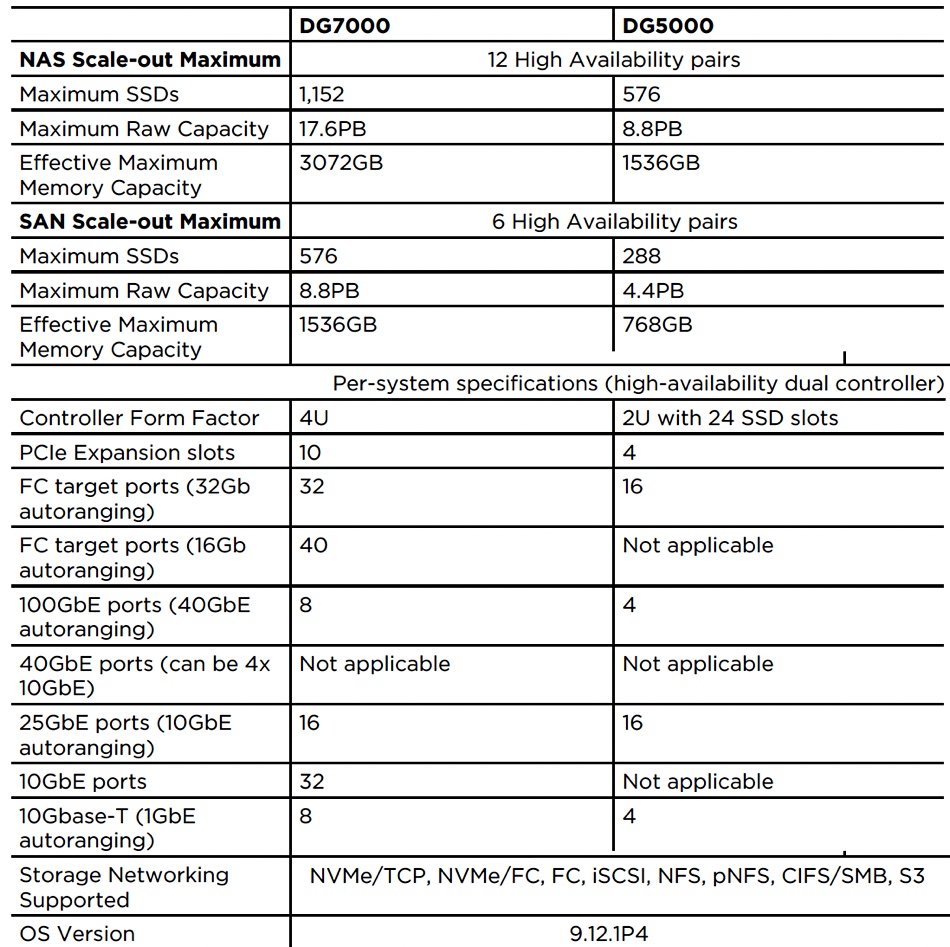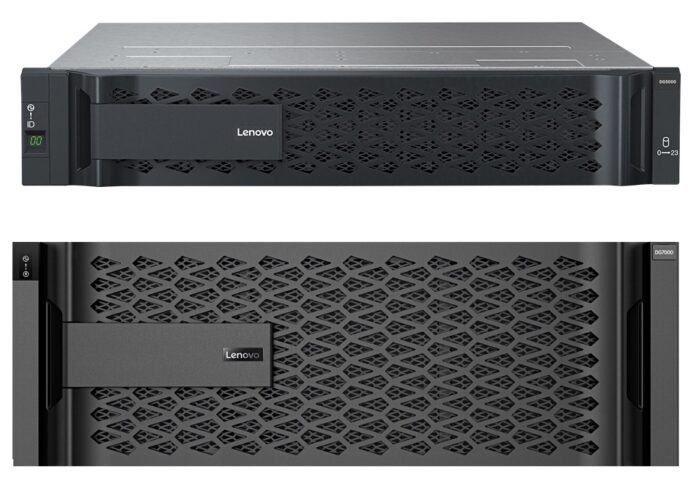Lenovo has upgraded its storage array and Azure Stack lines with faster and higher-capacity products to support AI and hybrid cloud workloads – just a quarter after a previous refresh.
Kamran Amini, Vice President & General Manager for Lenovo’s Server, Storage & Software Defined Infrastructure unit, said: “The data management landscape is increasingly complex, and customers need solutions that offer the simplicity and flexibility of cloud with the performance and security of on-premises data management.”
As such, Lenovo has announced the ThinkSystem DG and DM3010H Enterprise Storage Arrays, OEM’d from NetApp, and two new ThinkAgile SXM Microsoft Azure Stack systems. The DG products are all-flash arrays with QLC (4bits/cell or quad-level cell) NAND, targeted at read-intensive enterprise AI and other large dataset workloads, offering up to 6x faster data ingest than disk arrays at a claimed cost reductiuon of up to 50 percent. They are also lower cost, Lenovo says, than TLC (3bits/cell) flash arrays. We understand these are based on NetApp’s C-Series QLC AFF arrays.

There is also the new DG5000 and larger DG7000 systems with the base controller enclosures being 2RU and 4RU in size respectively. They run NetApp’s ONTAP operating system to provide file, block and S3 access object storage.

The DM products consist of five models: the new DM3010H, DM3000H, DM5000H and DM7100H, with combined disk and SSD storage.

The DM301H has a 2RU, 24-drive controller and differs from the DM3000, with its 4 x 10GbitE cluster interconnect by having faster 4 x 25 GbitE links.

There are two new Azure Stack boxes – ThinkAgile SXM4600 and SXM6600 servers. These are 42RU rack hybrid flash+disk or all-flash models and augment the existing entry-level SXM4400 and full size SXM6400 products.
The SXM4600 has 4-16 SR650 V3 servers compared to the SXM440’s 4-8, while the SXM6600 has the same number of servers, 16, as the SXM6400, but has up to 60 cores versus the existing model’s maximum of 28 cores. Read a data sheet here.








